Don't wanna be here? Send us removal request.
Text
Reflecting on Professional practice module
This module was an extension of design process 2 and design business and promotion from the second year. This module has helped me to be prepared for when I go out into the world of employment within the design industry as I have a clear blueprint in place in order to gain relevant employment. Due to creating my own presence through the use of self branding and creating a portfolio of work and networking through LinkedIn etc. This module has enabled me to focus on myself as a brand and market myself through the use of self-promotion and getting myself out there.
I expected the module to be difficult due to already having a brand, logo etc. in place from carrying out the design process and design business and promotion module from last year, but I thoroughly enjoyed the challenge in order to reinvent myself as the branding I had in place was mediocre at best and didn’t suit my style in the current climate as it was out-dated and didn’t reflect me as a designer, so I enjoyed redesigning my branding and personal identity from top to bottom. I really enjoyed the module as I found it really informative and eye opening and it has set me up to be a freelancer if I wish to, which I feel is really helpful. Doing this module has made me feel more confident about going into the industry when I finish my degree, I feel the identity and branding I have created for myself is to a high standard and is successful due to the consistency of my overall brand.
In reflection to the decisions and processes I have gone through in the module I feel I have made the right decision for myself and stayed true to what I feel strongest and best suited to in regards to what sectors I want to work within, I feel I have become very independent with my own personal work and design decisions within this last year and this module has only further developed my independence and decision making in which I can take into my professional career.
In this module I have completed a range of tasks such as: brand identity through the aid of creating a supporting stationary set as well as building my own portfolio showcasing my best and most relevant work to date in order to gain recognition for my design capabilities. I have also has to create relevant supporting social media pages and a creative CV and covering letter as well as an outline of what I want to achieve in both my personal and work life in the future and how I’m going to go about doing this through the use of creating a three business plans and a work and life balance map. These will all come into use and aid me in the future when I graduate university.
I had a range of problem with this module when It came to printing from the size and bleeds of document to certain websites just not printing a portfolio book less than twenty pages, which made me have to improvise and purchase a ring binded book instead.
Overall I feel very pleased with my professional practice project, as I have had little to no time to complete it due to personal circumstances out of my control, I feel all of my branding is consistent and is of a professional standard, and all of my supporting documents represent and reflect my overall brand I feel I have been independent and effective when it has come to networking, taking into account my restrictions, I feel the only thing I could really improve is my creative CV as I’m not particularly blown away by it but this was due to the little time I have had and I’ve just had to get things done as and when I can.
In conclusion this module has enabled me to become more independent and have more belief in myself as both a designer and also an individual when I go out into the world of work which has in turn enabled me to improve my networking skills which I feel stands me in good stead for the future.
0 notes
Text
Final exhibition
Considering your career launch, the final exhibition.
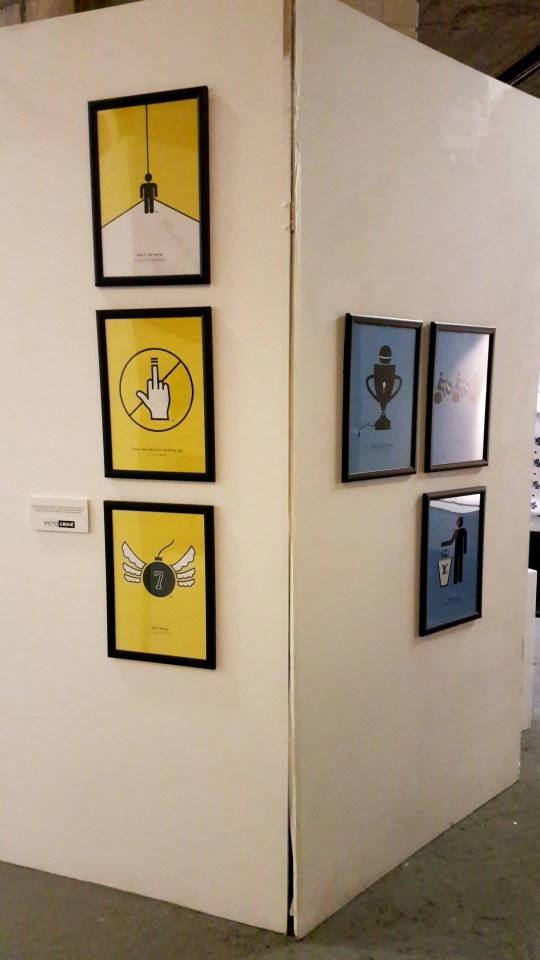
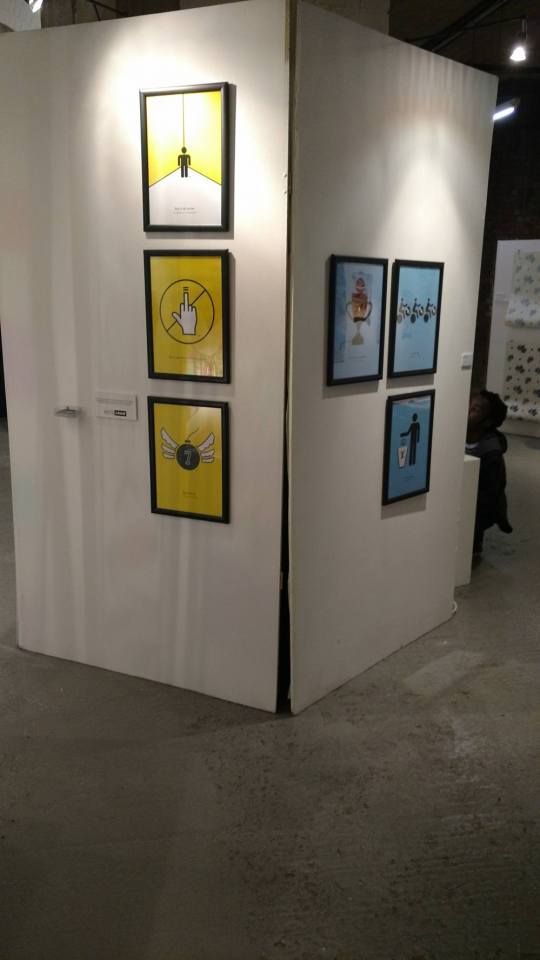
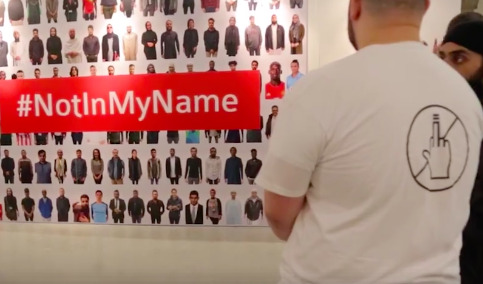
For my final exhibition I exhibited my pictogram brand which was a range of artwork depicting grime lyrics, albums and song titles through the use of pictograms in order to capture the essence of exclusivity within the grime scene and for it to be easily understood, I branded it in order for it to be a merchandising business where fans could purchase T-shirts, posters and stickers etc. This was a perfect project for me as i love branding and creating eye catching visuals for a targeted audience, i also have the option of taking the project further and possibly launching my own merchandising business out of it, I also used the exhibition as a chance to network and show my work of to potential clients also through the use of my work and talking to them as well as providing them with an option to take away one of my business cards for future reference.
0 notes
Text
Tax and HMRC
When you register as self employed you will need to provide the following information to HMRC:
Name
Address
National Insurance number
Date of birth
Telephone number
Email address
The nature of your business
Start date of self-employment
Business address
Business telephone number
Your Unique Tax Reference (UTR) – only if you were within self-assessment previously
The business’ UTR – if you’re joining an existing partnership
If relevant, the full name and date of birth of any business partners
Sound straightforward? Setting up as a sole trader, or freelancer, is by far the easiest and quickest way to start a business.
It’s fairly light on paperwork and doesn’t require paying a registration fee; however, it’s paramount that you register as self-employed within three months of working or starting to trade.
Failure to do so may result in a penalty based on unpaid National Insurance contributions.
Read our step-by-step guide on how to register as a self-employed sole trader here:
Before you set up as a sole trader
Pretty much anyone can set up as a sole trader, although there are certain types of work that require obtaining a licence or permit from your local authority, such as childminding, taxi driving or street trading.
If you’re planning on setting up as a sole trader and running your business from home, you should check if you may have to pay business rates for the part of your home that you use for business purposes, depending on whether or not you use that part for domestic purposes as well.
For example, if you work from a computer in your bedroom it is unlikely you’ll have to pay business rates, but if you work from a separate office, this may entail paying business rates. Take a look at our guide on how to calculate business rates here.
Another thing to bear in mind if you’re working from home is whether or not you need planning permission.
If you propose to make any changes to your house for business purposes, such as building an extension, or if you’re likely to cause disturbance to your neighbours, it will probably be necessary to get planning permission.
Contact the planning department of your local authority for more details.
How to register as self-employed
Anyone who becomes self-employed must register for income tax and National Insurance contributions with HM Revenue & Customs (HMRC). This can be done either online, by phone or by post, however it is far quicker and more convenient to sign-up online.
When registering you will need to provide your National Insurance number – if you don’t have one, contact the Jobcentre Plus application line on 0845 600 0643 (or 0845 602 1491 for a Welsh language contact centre).
While it is not possible to register in advance, it is important that you inform HMRC as soon as you start working.
Self-assessment tax returns
As a self-employed sole trader, you’ll have to complete a self-assessment tax return to HMRC. This involves filling in a tax return form, either online or paper, in which you inform HMRC of your income and capital gains, or in which you may claim tax allowances or reliefs.
Usually, HMRC will send you your self-assessment tax return in April. However, if yours doesn’t arrive by the end of April, contact your tax office.
If this is the first tax return you’ve completed, you’ll need to fill in a self-assessment registration form first. Make sure you have your National Insurance number to hand when doing this.
This involves completing a CWF1 form to inform HMRC about your business, and this will also register you for self-assessment. If you’re not self-employed, you’ll need to complete an SA1 form. Once this is done, HMRC will set up tax records for you and will send you a Unique Taxpayer Reference (UTR).
Self-assessment payment deadlines
If you owe any money by the end of the tax year (April), you must pay that amount by January 31 the following year. The payment deadline is the same whether you file online or on paper. You will need to pay one or both of the following:
The balancing payment (the balance of tax you owe for the previous year) The first of two ‘payments on account’ (advance payments for the current tax year)
You should receive a self-assessment statement that shows the amount due, however if you don’t receive this before payment is due, you’ll need to work out the tax due yourself by registering for self assessment online and using the ‘view account’ option.
If you’re asked to make payments on account, your deadline for making your second payment is July 31.
Registering for VAT
As of April 1 2014, if you expect to have a turnover of more than £81,000 a year, VAT is applied to your earnings, which also involves contacting HMRC.
To register for VAT you’ll need to fill in one or more forms, depending on your business’ circumstances, and then submit them to HMRC. Most businesses only have to complete one form, with the exception of partnerships and groups of companies.
To apply for basic UK VAT registration, download and complete the form VAT 1 from HMRC. If you’re registering a partnership you’ll also be required to fill in VAT 2.
If you’re planning on doing business internationally, you can download the form to register for VAT for acquisitions, although this cannot be completed online, and so must be sent by post to HMRC.
Maintaining financial records
It is important that you set up a financial record-keeping system, which includes maintaining all records that show your business income and expenses. This is vital for tax purposes but is also beneficial to help you stay on top of your finances.
Business records you need to keep:
annual accounts, including profit and loss accounts
bank statements and paying-in slips
cash books and other account books
orders and delivery notes
purchase and sales books
records of daily takings such as till rolls
relevant business correspondence
In general, you must keep the following VAT records:
Records of all the goods and services you buy or sell
Copies of all sales invoices you issue
All purchase invoices for items you buy
All credit notes and debit notes you receive
Copies of all credit notes and debit notes you issue
Any self-billing agreements you make as a supplier
Copies of self-billing agreements you make as a customer and name, address and VAT registration number of the supplier
Records of any goods you give away or take from stock for your private use including rate and amount of VAT
Records of any goods or services bought for which you cannot reclaim the VAT
Any documents dealing with special VAT treatment
Records of any goods you export
Records of any taxable self-supplies you make – for example if you sell cars and you use one of your cars in stock for business purposes
Any adjustments such as corrections to your accounts or amended VAT invoices
A VAT account
In general, you should retain all your business records that are relevant for VAT for at least six years. As long as your VAT records meet the requirements laid down by HMRC, you may keep them in whatever format you prefer (paper and/or electronic).
If your business is in the construction industry, you must retain sufficient business and accounting records to support your Construction Industry Scheme Return. You must tell HMRC each month about all the payments you’ve made to your subcontractors within the scheme by making a monthly return, either by paper or online.
You’ll need to keep the following details:
The gross amount of each payment you make to a subcontractor, excluding VAT
The amount of any deduction you made from a payment before you gave it to the subcontractor
If you made a deduction, the amount of any material costs, excluding VAT
You should retain your records for at least three years after the end of the tax year that they’re for. You’ll be required to make them available, should HMRC ask to see them.
National Insurance contributions
If you’re self-employed you must pay Class 2 and Class 4 National Insurance (NI) contributions.
Class 2 NI contributions are paid at a flat rate of £2.70 a week, while Class 4 NI contributions are paid as a percentage of your annual taxable profits, which is 9% on profits between £7,755 and £41,450 (for tax year 2013-2014), and a further 2% on profits over that amount.
However, if your profits are expected to be less than £5,725 per year you may not have to pay Class 2 NI contributions. Class 2 NI contributions can be paid either monthly by direct debit or by quarterly bill. You will pay Class 4 NI contributions when you pay your income tax.
All this may seem quite daunting at first, but if managed properly it’s really not as overwhelming as it seems. The best thing you can do is stay organised, maintain your paperwork and flag up any tax or self-assessment deadlines in your diary well in advance so you have adequate time to prepare for them.
http://startups.co.uk/how-to-register-as-a-self-employed-sole-trader-or-freelancer/2/
0 notes
Text
Job applications
LinkedIn Job applications:
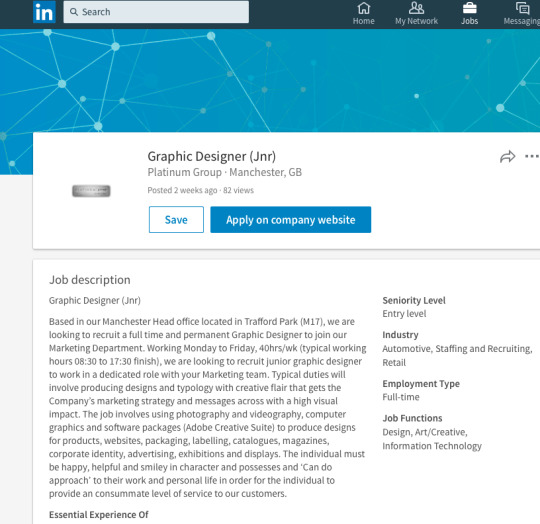
This job role came up on LinkedIn so i applied for it due to the sector it was within and what the job role entailed which was branding and advertising along with other things, so i feel it would be good for me as i can do what i enjoy but also gain experience and knowledge within other sectors therefore improving myself as a designer.
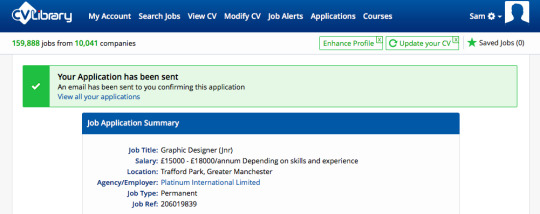
This is the website i was directed to in order to apply for the role i already had n account with this job search site so i just updated my CV and added my cover letter to the job application, i hope to hear something back from them as it would currently be ideal for me right now and let me get my foot into the door within the design industry and would be a stepping stone for my career and was i want to do.
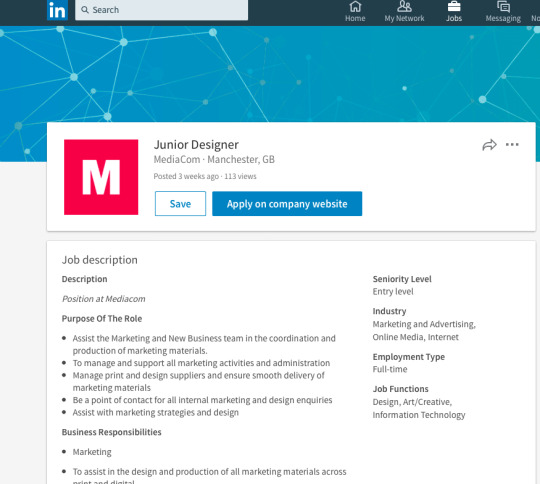
This is a job role i found on LinkedIn that I was interested in as it was local and its within a sector i want to work within which is advertising as it is an area which interest me and i feel where my skills lie.
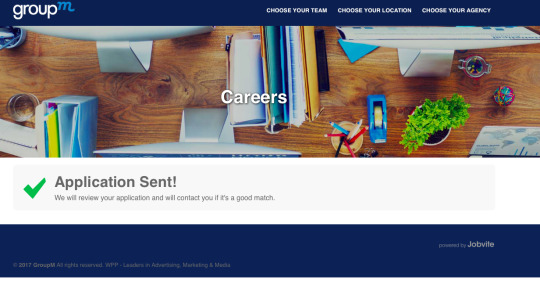
I have sent my application to them through the website it directed me to, I forwarded them my covering letter and also sent them my creative CV and i look forward to hearing back from them as it would be a job role that ideally suits me as an individual.
Email response from application:
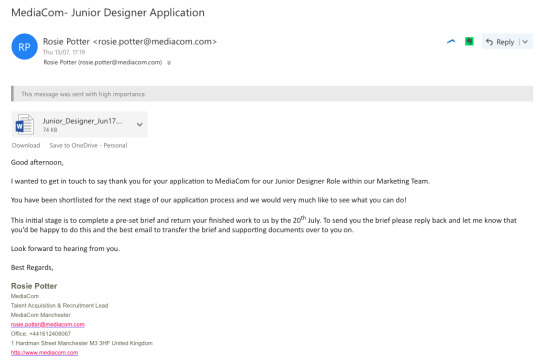
I received a reply back from the mediacom role I applied for through LinkedIn saying i was through to the next stage in their application process, which is positive news as it is an agency based in Manchester for the next process they are giving me two briefs i need to complete by the 20th of July one is an a4 Print advertisement and the other is an infographic.
Second phase and interview offer:

I passed the second stage of the application process and was invited for a interview to meet with the creative director at Mediacom, which i attended and took my portfolio for and I will here back from him within a week regarding if i have got the place or not.
Job descriptions and person specifications:
Junior design role Bolton:
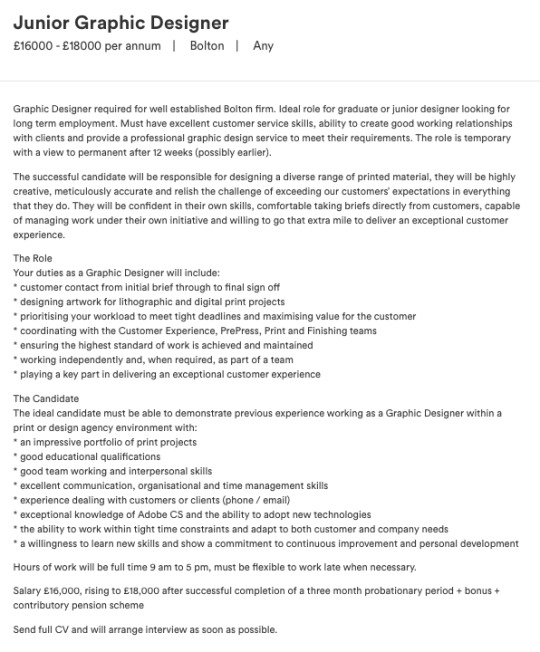
The application process for this role was very simple as i already had an account set up with the job site all i had to do was update my CV and simply just apply, this role would be ideal and would be a stepping stone to moving onto something better and higher up within the design sector.
Junior designer role in Manchester:
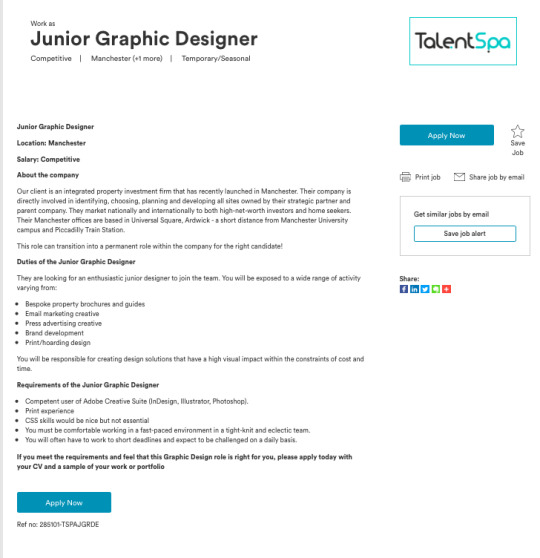
This is another job role i found online through relevant job sites, I felt it was relevant as it was obviously for a junior design role, it was based in Manchester and the role included various activities i enjoy such as advertising and creating print media which is a reason i applied as if i was offered the job it would be of interest to me.
Freelance graphic design role:
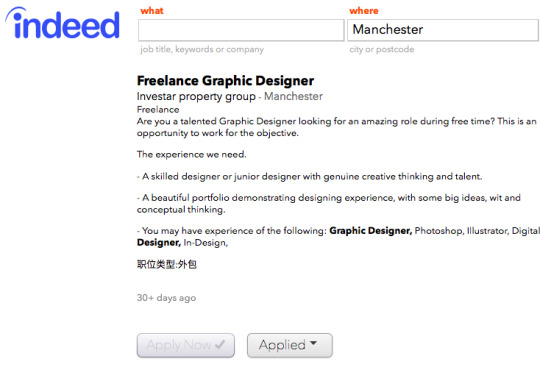
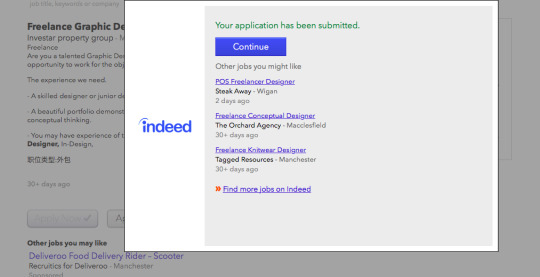
I have applied for this role as it is for a freelance graphic designer role which i feel would be ideal at this time and help me build my portfolio to make it stronger i could also work from home which currently given my situation would be beneficial to me due to having to look after the twins.
0 notes
Text
Making connections on LinkedIn
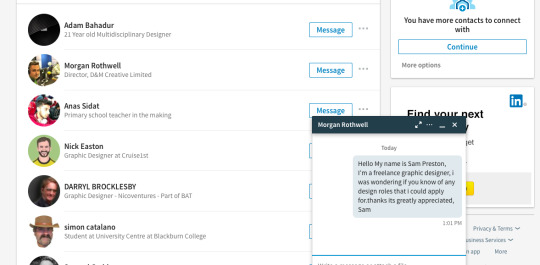
I messaged Morgan Rothwell as he is the director for D&M creative, I feel it is important to connect with respective businesses and directors of them in order to potentially gain work in the future, I chose to connect with Morgan as it isn't based too far away,which is ideal and the company specialise in creating corporate identities and branding of which is an industry i want to work within so that is why i have chosen to make a connection and contact with him.
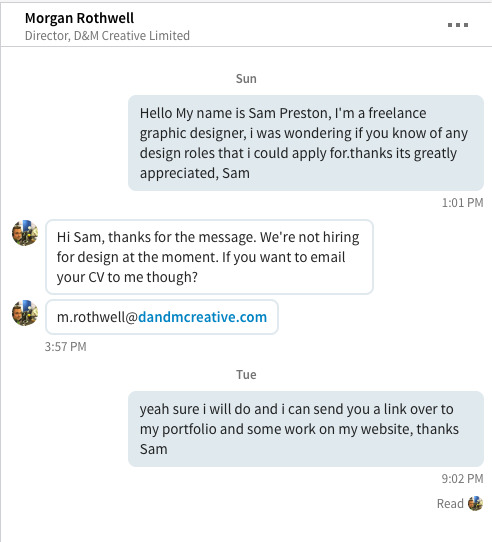
I received a reply back from Morgan and although there wasn't any work available, he did ask me to send over my CV which i did along with my portfolio and website link in the hope of being offered some work in the future.

This is the email i sent back to Morgan regarding what he requested.
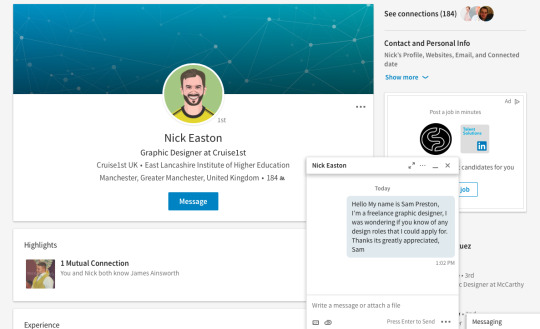
I have also made a connection with Nick easton of who i have messaged regarding if he knows of any work that is potentially available to me, I have chosen to connect with Nick as he works for a graphic design agency based in Manchester that also specialise in advertising which is a field i want to potentially work within as i feel my skills are suited to that industry as i enjoy creating advertisements.
Reply back :
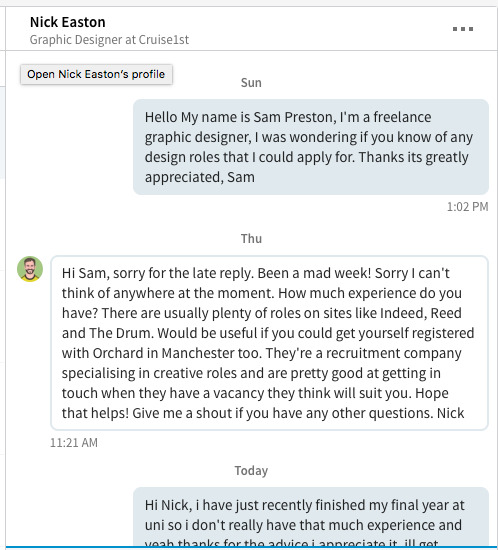
I received a reply back from Nick which was really helpful although he didn't know of any current graphic design roles that i could apply for he did direct me into the path of a few sites i could try and find some graphic design work and he also recommended signing up with a recruitment company based in manchester that offer job roles to design creatives based on their needs etc so I found that really helpful and something i could look into doing.
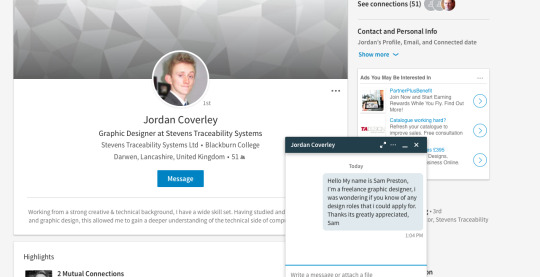
I messaged Jordan as he works for a design agency and he is local and has also been and taken on the same path and education as i have so thats why i felt it was relevant to message him on order to see if he knew of any jobs etc that may be available to me.
0 notes
Text
Covering letter
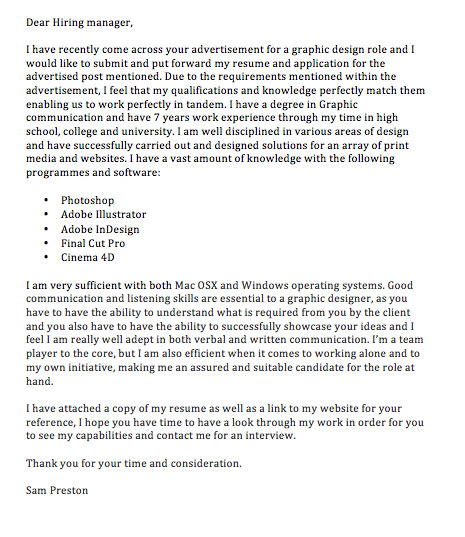
This is the cover letter I have wrote which I'm going to forward when putting in applications for graphic design roles that i feel i will be accustomed to. I have incorporated my skills and experiences into the cover letter in order for the viewer to have an overview of my skills set etc.
0 notes
Text
Business plans
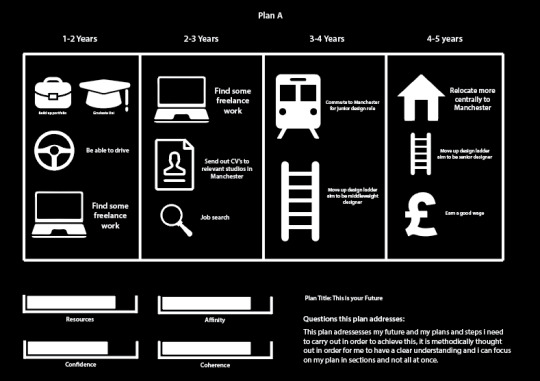
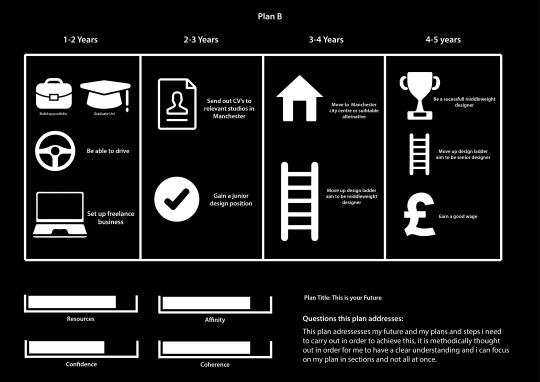
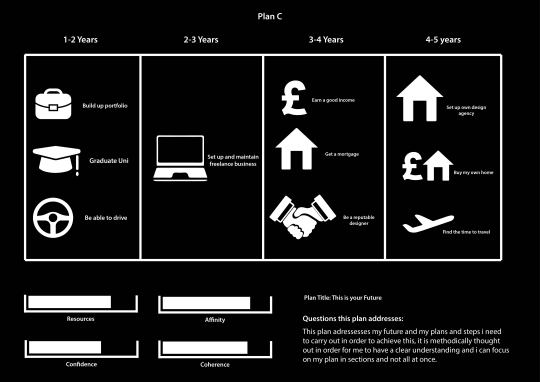
These are my 5 year A,B and C business plans that i have created. My first plan is my outline of what I'm going to do in the coming future after i have graduated etc. Plan b is an alternative and back up option to plan A if all else fails and Plan C is my ideal plan if things fitted into place how i want them to with no hiccups or set back etc although i know there will be plenty along the way, this can be achieved if i have the right mindset and the correct people around me supporting me along the way and pushing me to succeed.
in conclusion i have enjoyed this task as it has made me think about the future more and what i have to do to achieve what i want in life and it has also enabled me to set goals and targets that can be achieved within a time frame which will also enable me to monitor my progress and keep me focused.
0 notes
Text
CV/Resume

This is my creative Cv i have created following on from and supporting my own personal branding in order for my supporting documents to be of suite and come as a consistent set i have incorporated some personal information about myself into my CV in order to be more personal and likeable as the viewer of my CV can gain an insight into who i am as an individual inside and outside of work.
0 notes
Text
Stakeholders and Work life balance maps
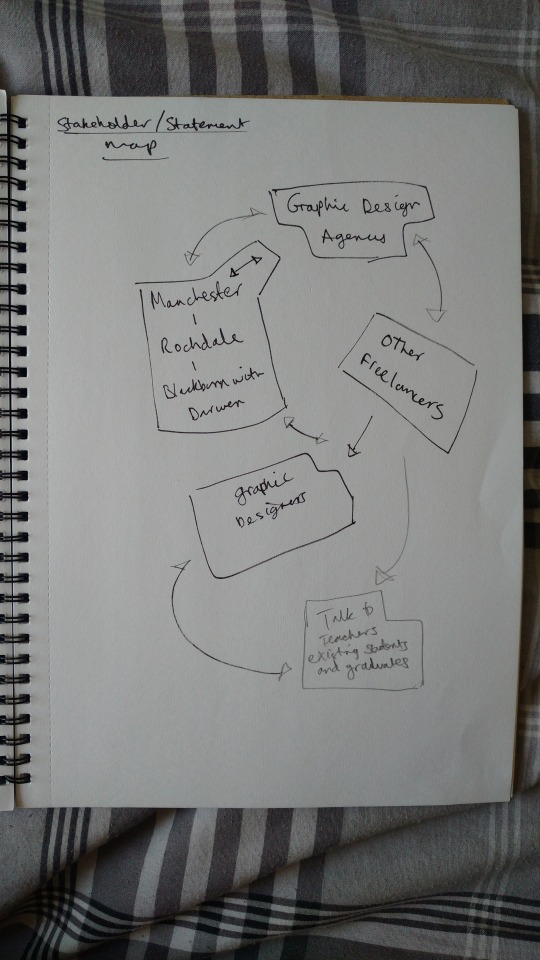
My stakeholders/ statement map shows how i can get more exposure as a designer through the people you can interact and network with such as teachers current students and graduates as well as current graphic designers as they have the potential to put me into connection with other people that can lead me in the right path of what I want to do.
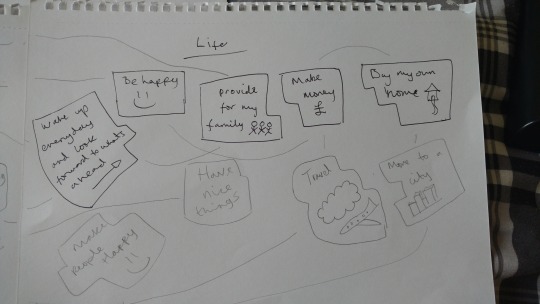
This is my life map and features a rang e of things i want to achieve in life these include things such as being happy, being able to provide for my family through the aid of making money as money is important even though people play it down it enables you to be comfortable and not have as many worries in my personal opinion, i would also like to travel and visit a range of countries as that is a passion of mine as my grandma likes to travel and i don't know a country she hasn't been apart from papa new guinea. I want to work because...
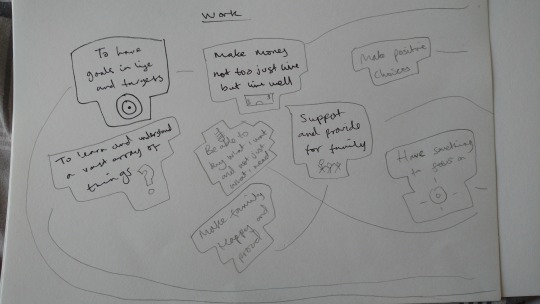
i want to have goals and targets in life that i want to achieve, another reason for wanting to work is to earn money for me and my family to life comfortably and also to provide for my mum as she has provided for me throughout my childhood and it would be nice to give something back and see her happy, I also want to learn and understand an array of things as id like to be a jack of all trades as oppose to a master of one as i feel that can hinder and limit you. something that is important to me is making my family proud and i can do that through making positive choices for not only me but for my family also.
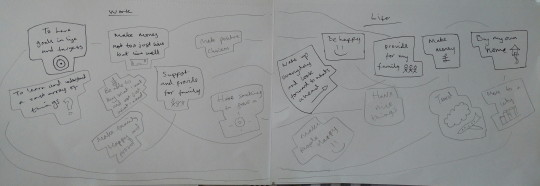
Doing this task shows that your life and work don't have to be two separate things and they can both work in tandem to achieve what you want and have your best interests at heart, although i do feel its important to do a job you enjoy and love or else there isn't any real point in doing it as it will eventually just make you unhappy.
1 note
·
View note
Text
How to calculate your design rate
When you first start out in the world of freelancing, it's difficult to know how much to charge and what your hourly or day rates should be. There are no rule books, no obvious solutions – it's a pure guessing game.
You obviously don't want to charge too much and price yourself out of the market, but you don't want to undersell yourself either. Above all, remember that your skills are valuable, so it's important you get your rates right before talking to any potential clients.
Here are Creative Boom's top tips on how much to charge for freelance work, followed by some very helpful links to some of the UK's leading bodies, societies and associations who can offer further guidance on freelance pricing...
Tips on Calculating Your Rates
1. Do some research
A great first step is to do some research to see what other freelancers are charging for similar work in your area. If you've got more established freelance friends, ask them what their hourly rates are. Compare and come up with a rate you feel reflects your skills and experience, but make sure you're competitive.
In my experience, I've known web/graphic designers and illustrators to charge anything between £20-£60 per hour; web/software developers between £25-£90 and copywriters to charge from £20 to £50 per hour. But how long's a piece of string? Your hourly rate will be totally specific to your skills and expertise, the area you're based, your competition and the type of clients you work with.
2. Know your place
It's worth bearing in mind that agencies – which have the responsibility and cost implications of staff and associated overheads – charge anything between £500 and £900 per day. As a freelancer, you won't be able to charge anything near this amount; unless your skills are very niche and in-demand. So do your research and come up with a suitable figure that reflects your sole status.
3. Calculate your overheads
When considering how much to charge, it's worth taking into account all of your business costs. That's whether it's the rent for your office, insurance, travel, stationery or materials. You've got to cover your costs, so make sure your hourly rate is reasonable as well as realistic.
4. Consider lost time
You can't expect to charge 40 billable hours each week, particularly as there'll always be lost time taking care of other things like administration, invoicing and other day-to-day tasks. Make sure you account for all those non-billable hours when coming up with your rates.
5. Consider how much you want to earn
Another way to figure out your rates, is to ask yourself how much you'd like your annual salary to be – taking into account your weekly billable hours and the amount of holidays you want to take. Check out Your Rate – a simple online calculator that will point you in the right direction.
6. Be flexible
When you start talking to clients, you'll soon realise that one day/hourly rate won't suit everyone. But it's wise to charge high first and be prepared to me knocked down on price. Therefore, know your ultimate minimum hourly rate, i.e. the lowest you're prepared to go and stick to that.
Go no lower because you have to remember that you've got overheads and business costs to cover plus you don't want to undervalue yourself. Remember, clients can always push you down on price – it never works the other way round.
7. Get comfortable talking about money
Us Brits can't bear to discuss the topic of finances, although I'm pretty sure that's the way everyone feels. But when talking about rates with clients, you have to learn to be comfortable, open and upfront about how much you charge and why. Don't be afraid to negotiate and have confidence in yourself, your abilities and how much you're worth.
8. Budgets
When meeting a potential client for the first time, try and establish their budget before you reveal your own rates. That way, you can adapt your price accordingly or decide whether you're the right person for the job. If the client is expecting to pay a ridiculously low price for your time, it's a pretty good warning sign that you should run fast in the opposite direction. You're running a business, not a charity!
9. Choose your pricing strategy
When costing up jobs for clients – you have two main strategies to consider: time or project-based. Time is when you log your hours/days and then invoice the client accordingly; project is when you calculate how long you think a piece of work will take and provide a fixed-price upfront. Choose the strategy to suit each job.
If in doubt over any project, explain to the client that you charge an hourly rate, based on the time it takes to complete the project – rather than guessing how long it will take initially and providing a fixed upfront fee. This is especially important for larger jobs, ones that could throw up all sorts of issues along the way.
10. Consider the unknowns
When costing up jobs, you have to consider your productivity and how much you'll realistically achieve in a set amount of time. It's always best to add on an extra day or two of your time as a contingency. That way, you won't lose any money on the job. Don't put yourself in a situation where you've not budgeted enough hours/days, you'll lose money and that's not where you want to be.
11. Every project is different
Don't get too worried about having a set hourly or day rate. It will inevitably vary from one project or client to another. Just stay aware of your competition and the economic climate as well as everything we've laid out in this article and you can't go wrong.
12. Create a rates chart
With your rates likely to differ from one client to the next, create a spreadsheet to keep track of what you're charging. Refer to this at the end of each financial year, so you can asses whether it's time to consider price increases. If you need help with raising your rates, here are some helpful tips to increase prices without losing clients.
Suggested Industry & Job Specific Freelance Rates
Some of the UK's leading bodies, associations and agencies have published recommended freelance rates, allowing you to easily make comparisons to your own. Here are some of the best sources, broken down by theme:
Digital & Design
In 2014, Cogs Agency put together a comprehensive salary benchmark for London's creative professionals, including recommended rates for freelancers. Some highlights include:
Senior Designer: £250 to £330 (day rate) Motion Designer: £200 to £300 Junior Designer: £100 to £200 Senior Front End Developer: £350 to £400 Junior Back End Developer: £150 to £250
However, the IT Jobs Watch is far more current, as it tracks the latest going rates for various tech professions. For example, the average daily rate for a developer in the UK is £400, as of April 2016.
If you're a developer or designer, then Mud, an agency based in Bath, has crafted this clever online tool that helps you figure out your rate based on your age, UK location, years of experience and profession.
Editors and Proofreaders
The Society of Editors and Proofreaders has its own suggested minimum rates for freelancers, as follows:
Proofreading: £22.75 (hourly rate) Copy-editing: £26.50 Substantial editing, rewriting, development editing: £33.50 Project management: £33.00
PR & Marketing
According to a survey by the Major Players, rates for PR and marketing professionals vary enormously. Highlights from their findings include:
PR Account Executive: £60-£100 (day rate) PR Account Director: £190-£250 Content Manager: £200-£300 Social Media Manager: £200-£300
http://www.creativeboom.com/tips/tips-on-how-much-to-charge-for-freelance-work/
In Conclusion:
As a junior freelance designer the rate of pay is between £100-200 a day depending on the size of the project which has been taken on, that should roughly work out at around £20 an hour which i feel is a fair charge. The standard rate of pay within the UK is around £7.50 but due to them getting one to one attention from me as a designer and them paying for my time and also running my own business and having to use my own equipment and file my own documentation I feel it is a fair rate of pay.
When running my own freelance business i will be undertaking a range of jobs which will all take different amounts of time to complete for example a logo may only take a couple of hours but and branding project might take a whole day so i feel it may be best to not price my work based on hours but the discipline and scale of the projects, for example a client can come to me with a clear outline of a logo they want which they are adamant is the right logo for them and it might only take me an hour to complete, which means the client has had a logo and an identity designed for them for only £20, so thats why I feel its better to have a price for the discipline and scale of the project as oppose to an hourly rate as such.
0 notes
Text
Website terms and conditions
Welcome to SP Graphics, If you continue to browse and use this website, you are agreeing to comply with and be bound by the following terms and conditions of use, which together with our privacy policy govern SP Graphics relationship with you in relation to this website. If you disagree with any part of these terms and conditions, please do not use our website.
The term 'SP Graphics’ or 'us' or 'we' refers to the owner of the website whose registered office is 8, Holmes Street OL12 6AQ. The term 'you' refers to the user or viewer of our website.
The use of this website is subject to the following terms of use:
The content of the pages of this website is for your general information and use only. It is subject to change without notice.
This website uses cookies to monitor browsing preferences. If you do allow cookies to be used, the following personal information may be stored by us for use by third parties.
Neither we nor any third parties provide any warranty or guarantee as to the accuracy, timeliness, performance, completeness or suitability of the information and materials found or offered on this website for any particular purpose. You acknowledge that such information and materials may contain inaccuracies or errors and we expressly exclude liability for any such inaccuracies or errors to the fullest extent permitted by law.
Your use of any information or materials on this website is entirely at your own risk, for which we shall not be liable. It shall be your own responsibility to ensure that any products, services or information available through this website meet your specific requirements.
This website contains material which is owned by or licensed to us. This material includes, but is not limited to, the design, layout, look, appearance and graphics. Reproduction is prohibited other than in accordance with the copyright notice, which forms part of these terms and conditions.
All trade marks reproduced in this website which are not the property of, or licensed to, the operator are acknowledged on the website.
Unauthorised use of this website may give rise to a claim for damages and/or be a criminal offence.
From time to time this website may also include links to other websites. These links are provided for your convenience to provide further information. They do not signify that we endorse the website(s). We have no responsibility for the content of the linked website(s).
Your use of this website and any dispute arising out of such use of the website is subject to the laws of England, Northern Ireland, Scotland and Wales.
0 notes
Text
Personal Website
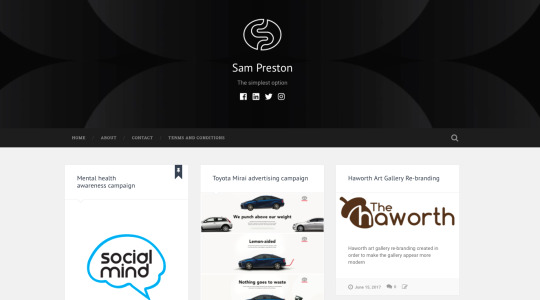
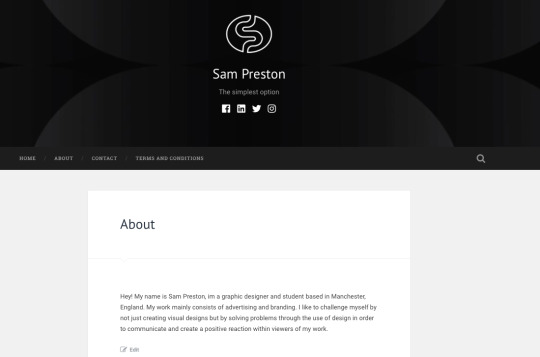
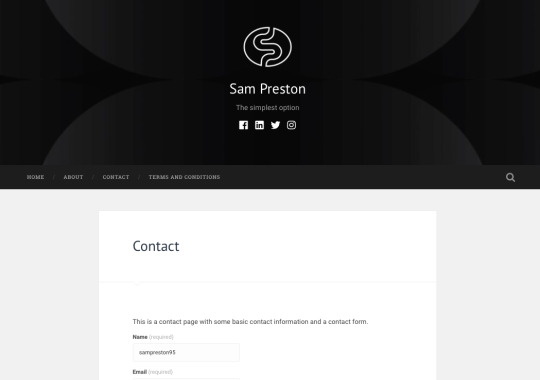
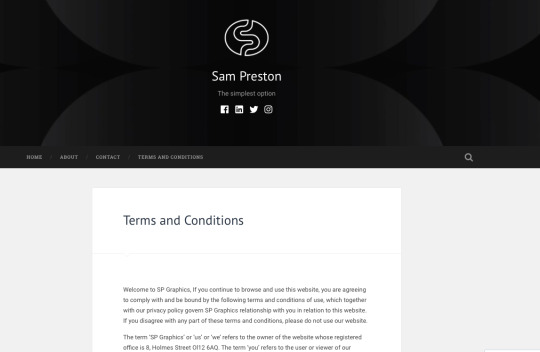
These are a few snippets of my website I have created using Wordpress i chose to create my website in Wordpress as i feel it appears more professional than being created in Wix due to their advertising and domain name unless you pay for a subscription etc. I have followed my own branding I have used across my business cards, postcards portfolio and CV through the selection of colour and theme, i have kept my website very simple in order to improve user experience and meet my own design principles and preferences.
0 notes
Text
Physical portfolio
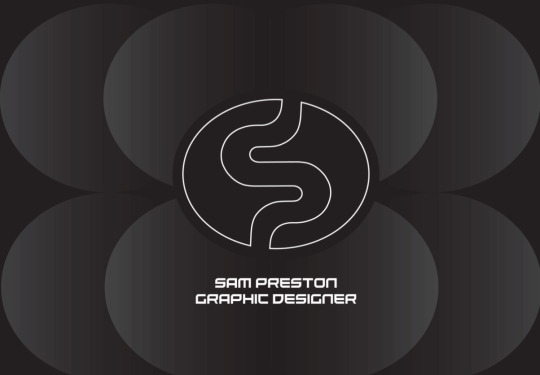
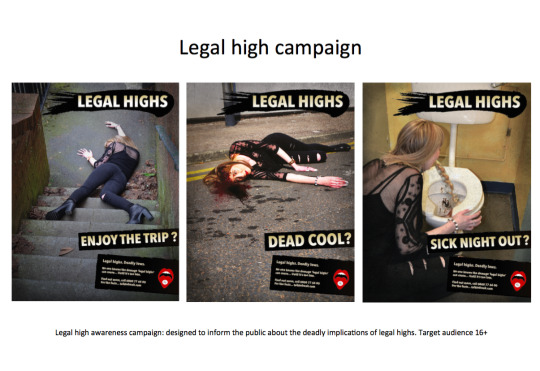
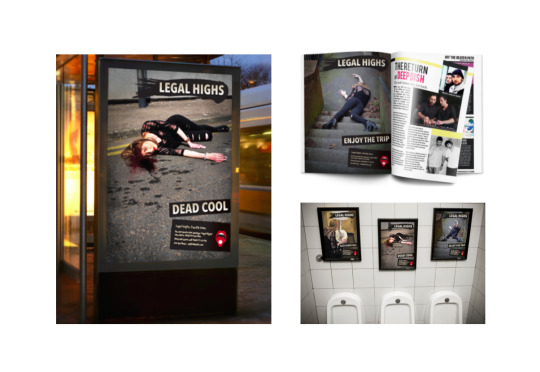
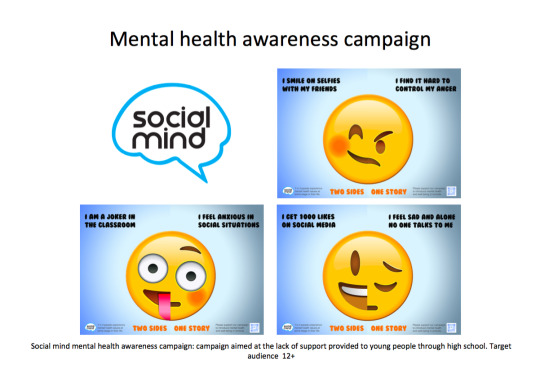
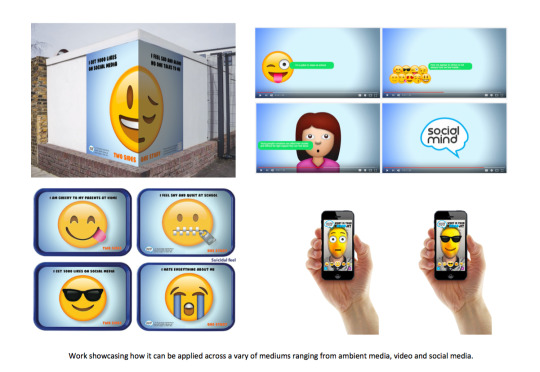
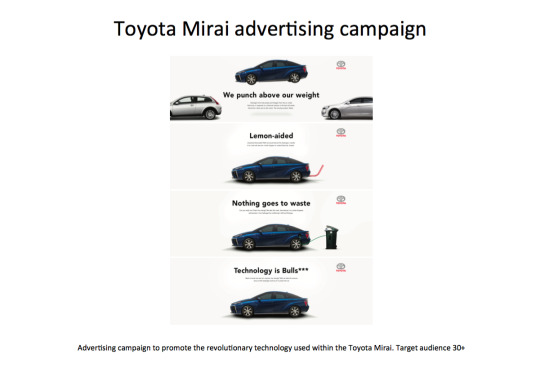
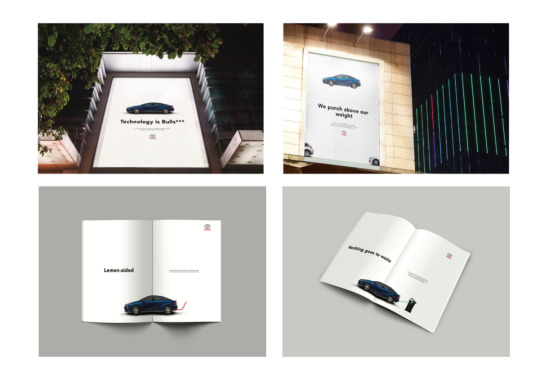
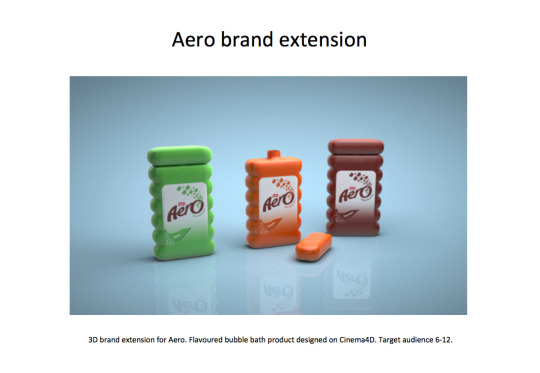
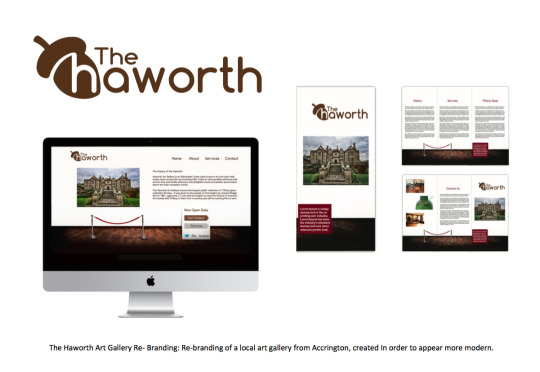
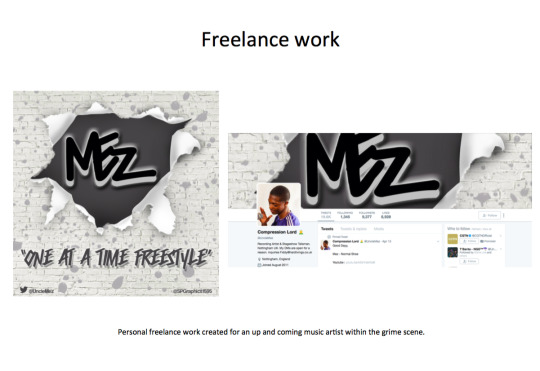
This is my personal physical portfolio I have created which features a range of my work I feel I am strongest in and have a passion for creating which is branding and advertising. I feel my layout is clean and simplistic enabling for the ease of legibility from the viewer i have also purposely chosen not to include too much type just a brief description in order to let my work do the talking as oppose to over explaining and bombarding the viewer with information.
I had troubles when i came to printing my final physical portfolio as i originally wanted to print my portfolio as a hardback book but when scrolling through various sites such as Blurb etc. I found it apparent they don't accommodate for small page counts there is a minimum of 22, so i decided i wasn't going to just fill my portfolio with work i didn't feel was up to standard just so i could get a book printed. So i decided to get my portfolio spiral bounded for its more practical purposes due to the fact that when in an interview my portfolio can be opened and lay flatland the pages can be turned very easily therefore enabling people to view my work efficiently, it can also be opened a full 360 degrees due to the spiral bounding technique.
0 notes
Text
Stationery set

This is my stationary set which features my business card, compliment slip email header and both a letterhead and an invoice sheet as well as a promotional sticker of my logo which designers can potentially stick onto their laptop etc. I feel my branding is ver consistent and fits my brand image and how i am as a designer which is precise, simple and witty which can be seen from my two in one logo which resembles both an S and a P.
0 notes
Text
Self promotion and marketing
Twitter page:
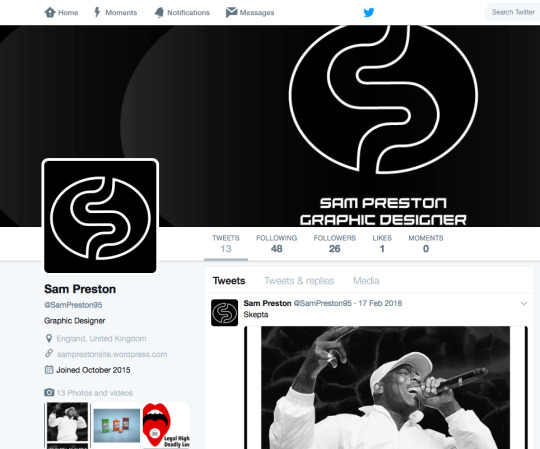
This is my twitter page solely created for my design needs as its not my personal twitter account although it being more personal can gain me more followers and seem more friendly and approachable, i have applied my branding throughout in order to fit my style and identity.
Facebook page:
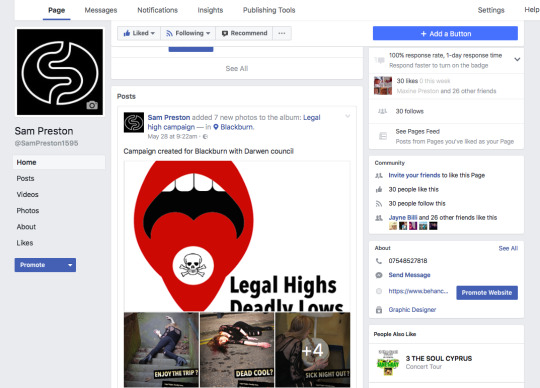
This is my Facebook business page i have created which people can follow etc so far i have around 35 followers which have been acquired naturally and not through promotional means, my branding is applied throughout and features a range of my design work in order for people to get a feel as to what it is i do and where my skills and interests lay.
LinkedIn:
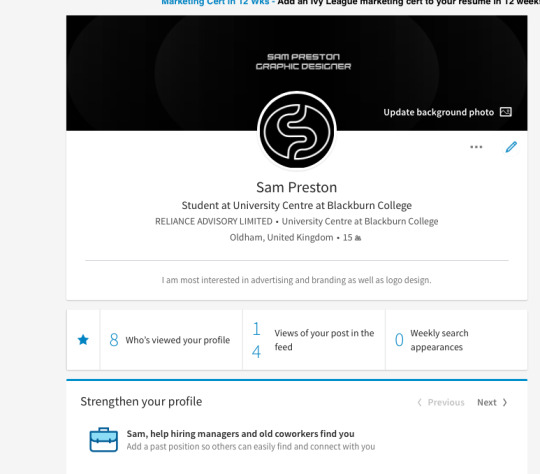
I have also branded my personal LinkedIn page with my branding in order to not only appear as an individual but also a designer as it showcases who i am and what I'm about and enables potential employers to get a feel for this too.
Behance:
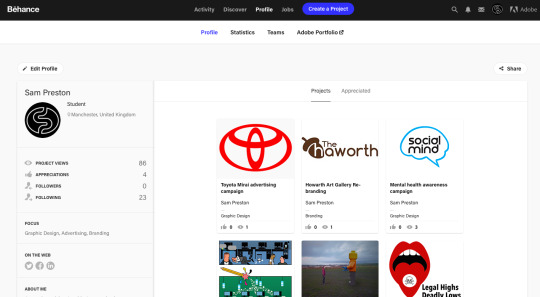
This is my Behance page which is my online portfolio where all of my design work is uploaded to as it is a community for designers and like minded people it also features my logo to represent myself as a brand in order to stand out as an entity.
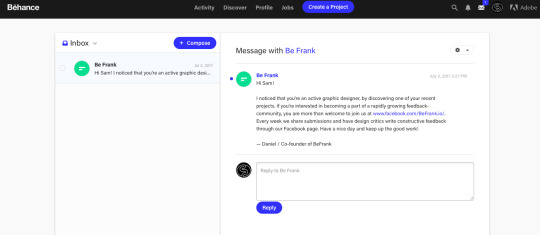
I received a message from BeFrank on Behance inviting me to become part of a feedback community regarding your design work i feel that could be beneficial to me as i can get professional feedback from current creatives within the industry in order to improve my work.
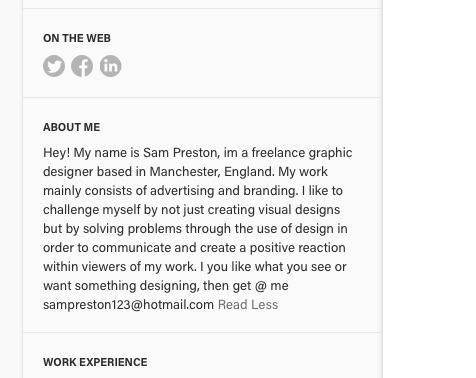
This is a little about me section i have included onto my online portfolio, i have done this to come across more personal and approachable and i have provided my email address so that if anybody has any queries or requests they can get in contact with me.
0 notes
Text
Business stationery/branding and application

This is an example of how my logo/branding could be applied to a sign potentially my own graphic design company in order to show how it would look in situe.
Business cards
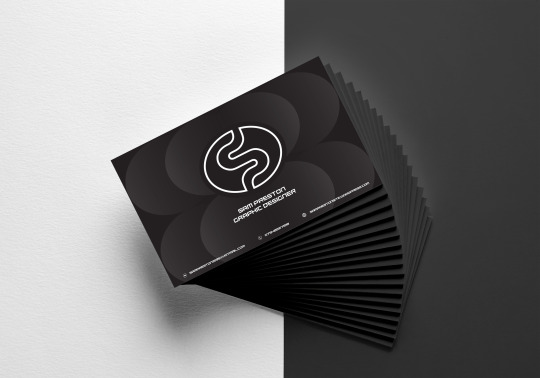
These are my business cards I have designed, I have designed them in a monochrome colour way, because as a designer i feel you don't have to over complicate things and can keep them simple while at the same time get your message across coherently and thats the way i am as a designer, so that is the reason for me choosing to have a monochrome colour way.
Initial Letterhead
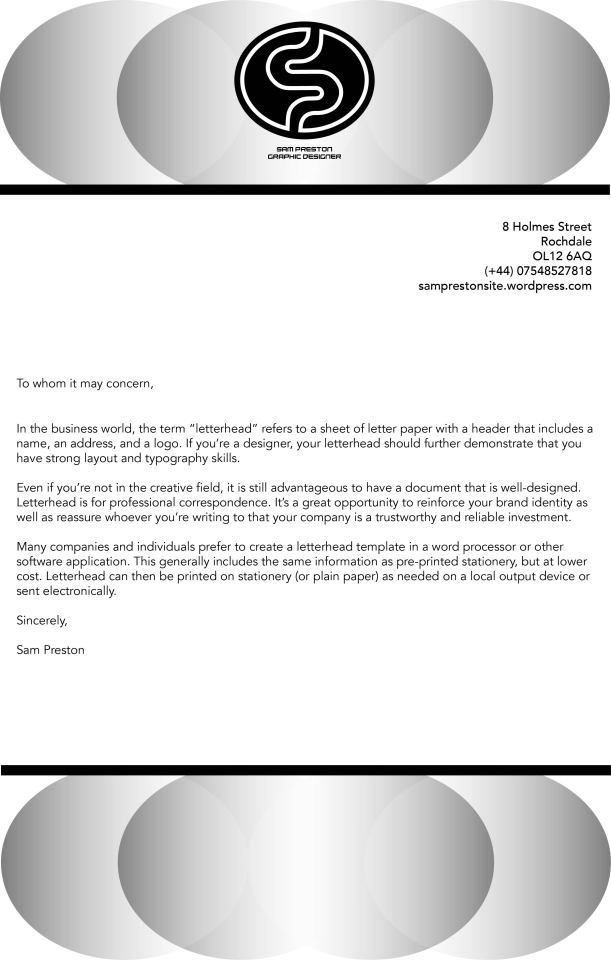
This was my original letterhead design but after reflection i decided again using it as it is not consistent with my branding due to the use of colours so i decided to re design my letterhead in order to create a more consistent one.
Redesigned letterhead:
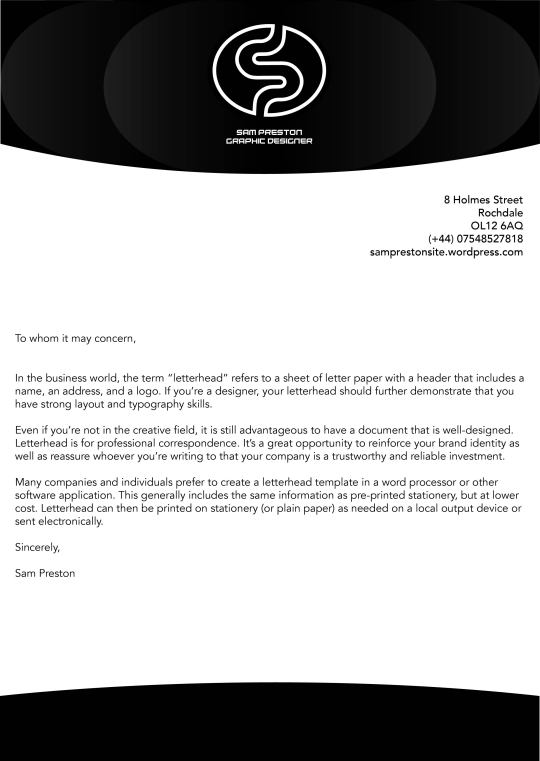
This is my redesigned letterhead after reflecting on my previous design, I feel this design to be much better than my previous one as it is consistent and fits within the rest of my brand unlike that of my previous design.
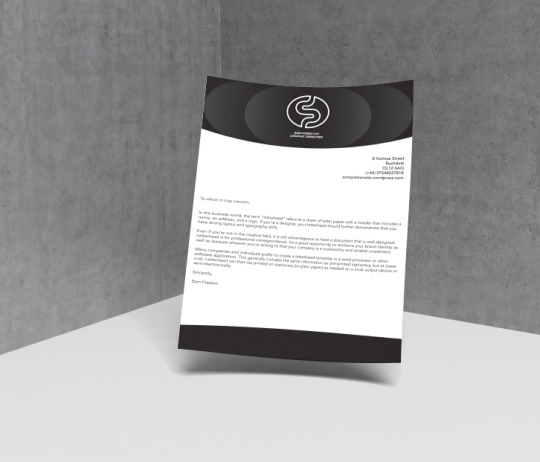
Invoice:
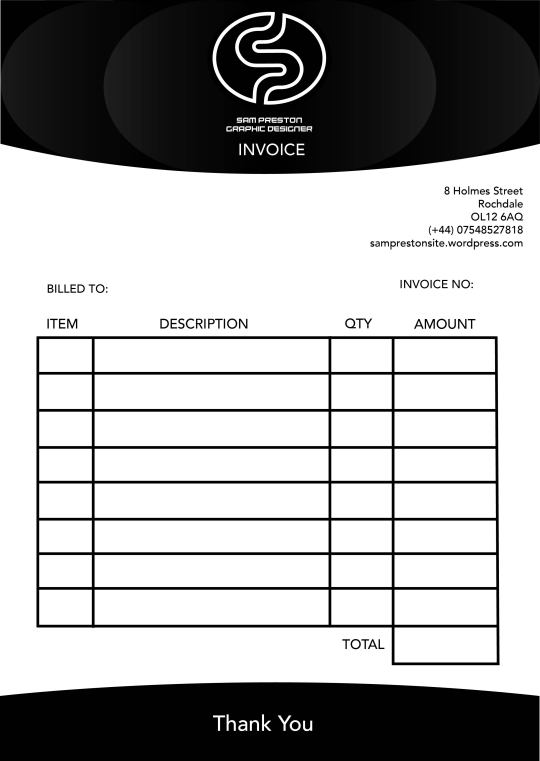
This is my invoice i have designed in the same style of my brand as a whole and i have also used the same layout as my letterhead in order to further improve the consistency of my branding.
Postcards:
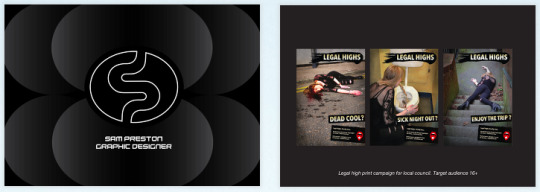
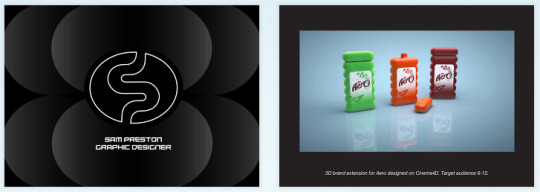
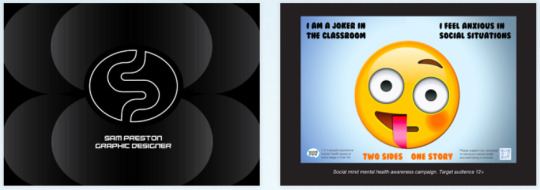
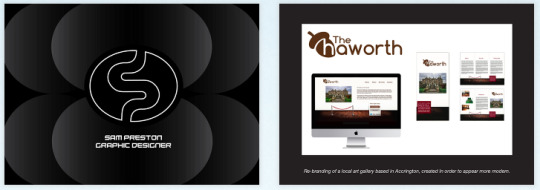

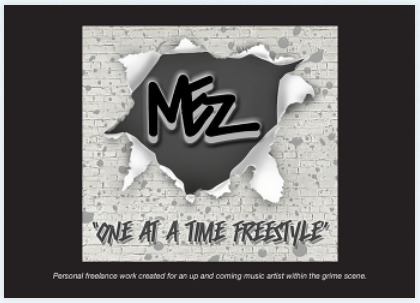
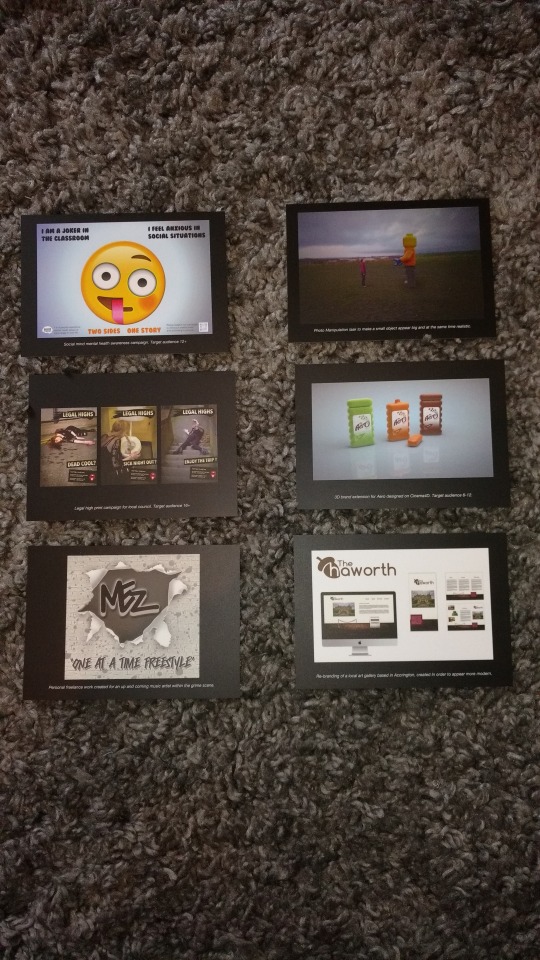
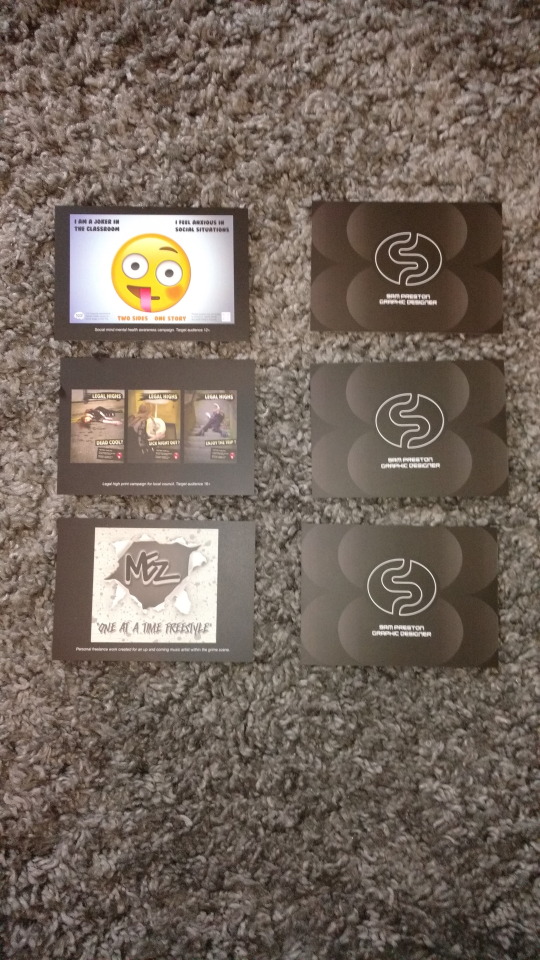
These are my postcards that I have designed and created, which feature some of my best work which shows of my strengths as a designer as it features a range of advertising, branding and I have also included some photo manipulation work into there as well just to show something different and that I can be multi disciplinary.
Stationary Box:
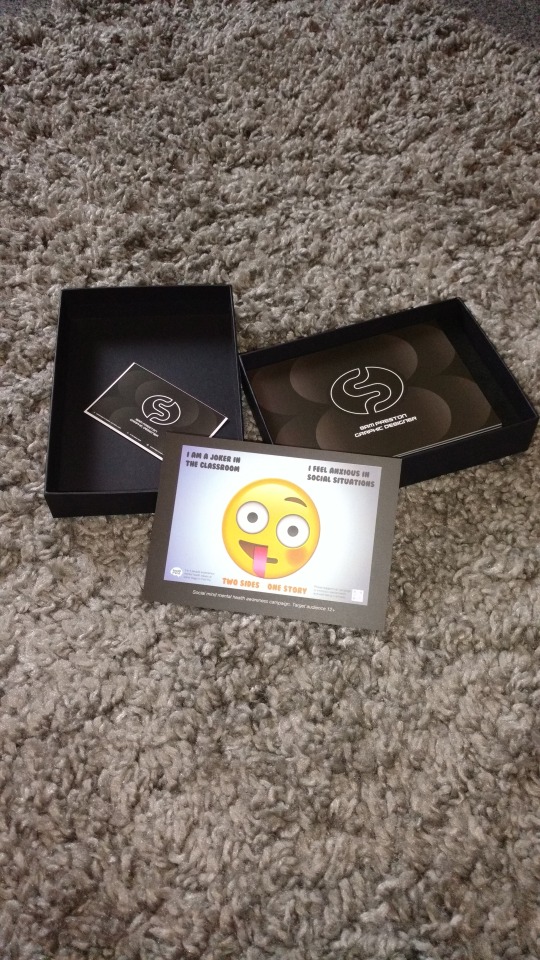
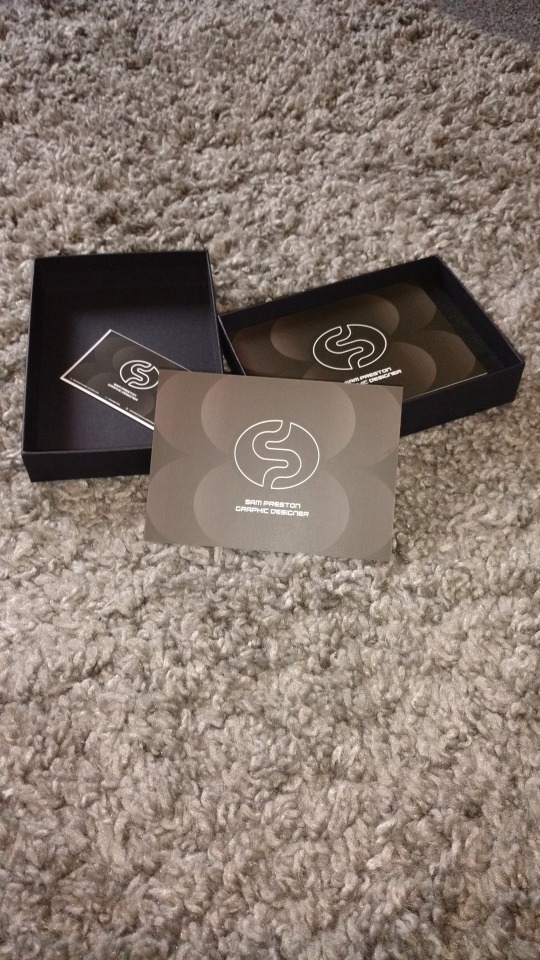

I have created a stationary box that I can take to interviews etc or hand out to potential employers, it contains my business card, CV and some examples of my work, i though it would be a good idea to do this as it is something different and potential employers can keep it and potentially use to box again for something else.
Compliment slip:
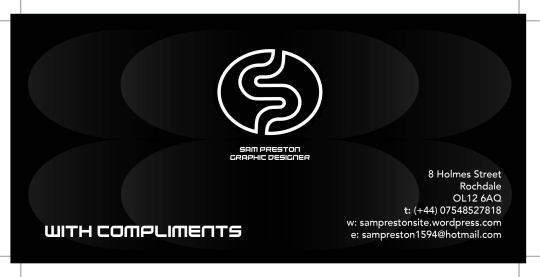
This is my compliment slip designed and ready to print with the appropriate bleeds added etc, i have kept my branding consistent throughout as i want to appear as professional as possible and being consistent is a key factor to doing so.
Email signature:

Email signature i have created to be added to my emails when i said them to clients or relevant people, it features my phone number, twitter link, website and obviously my email and it follows my brands identity in order to keep consistency.
0 notes
Text
Copyright
Copyright is a legal right that protects the use of your work once your idea has been physically expressed. The current copyright legislation in the UK is the Copyright, Designs and Patents Act 1988.
What kind of work can be protected?
Some examples of work that can be protected by copyright are videos, blogs, original literary, dramatic, musical and artistic work, including illustration and photography, original non-literary written work, such as software, web content and databases, sound and music recordings, film and television recordings, broadcasts and the layout of published editions of written, dramatic and musical works.
How copyright protects your work
Copyright prevents people from:
copying your work
distributing copies of it, whether free of charge or for sale
renting or lending copies of your work
performing, showing or playing your work in public
making an adaptation of your work
putting it on the internet
How long copyright lasts?
Copyright protection starts as soon as a work is created. Once your copyright has expired, anyone can use or copy your work.
The length of copyright depends on the type of work.
How long copyright usually lasts
Written, dramatic, musical and artistic work 70 years after the author’s death
Sound and music recording 70 years from when it’s first published
Films 70 years after the death of the director, screenplay author and composer
Broadcasts 50 years from when it’s first broadcast
Layout of published editions of written, dramatic or musical works 25 years from when it’s first published
The length of copyright also depends on how long ago the work was created.
What can you do if you find somebody has copied your work ?
Infringement of copyright occurs when someone takes either all of your work, or a substantial part of it, without permission. However, there are several exceptions which allow a copyright work to be used without permission.
If someone has infringed your copyright you could contact them directly, consider mediation, or seek legal advice. If you decide to take legal action, there are a number of remedies that you can seek from the court.
The infringer can give a promise, known as an undertaking, that they will license the work from you, under terms that you agree.
The court can grant an injunction. This means that the judge will make an order to stop the person from using your work. This could also mean having your work returned to you or seizure of any infringing copies.
The court may also award damages. This may be with an order for damages; to restore you back into the position that you would have been in if the infringement had not occurred. Or it may be an account for profits; where the profits gained by the infringer are assigned to the original copyright owner.
Action against copyright infringement can be taken by the copyright holder or someone who has full licence of the work. It is also possible to take action against infringement of moral rights. So, even if you have sold your copyright to a publisher, for example, you can still assert your moral rights, such as objecting to derogatory treatment of your work. The court may grant an injunction to stop the person doing the derogatory act against your work.
https://www.gov.uk/copyright/overview
http://www.bbc.co.uk/copyrightaware/what-is
http://copyrightuser.org/topics/faqs/
How you could lose copyright of your work?
1. Sell or transfer your copyright
If you sell or transfer your copyright to someone else, they now own the copyright. If you only license the work to them, then you retain the original copyright — they just get the right to use it according to the terms of license agreement.
The transfer of copyright takes place via a signed contract by the actual person who originally created the work or their authorized agent. In other words, if someone’s avatar tells you, “You can have the copyright to my work,” get it in writing. Otherwise, it’s not legally binding, and they can go after you later for infringing.
Similarly, if a Second Life creator says, “I give up, I’m sick of all this infringement. Do what you want. I hope you choke on it, you lousy hackers!” they’re not actually giving up their copyright. They’re just expressing their personal dissatisfaction. They can change their mind at any time, come back, and start suing people. Now, those other people may argue that “Do what you want” implied a license to use the work. It would be up to the courts to decide.
2. Sign a “work for hire” agreement
When you work for a company — or are a freelancer who signed a “work for hire” agreement — everything you create belongs to the company.
Again, this agreement must be legally signed. If it’s an avatar who says, “I’ll build this for you, and you have all the rights to it,” ask for a written, legal agreement signed by the actual person or their legal representative. Even Miley Cyrus signed her contracts with the name “Destiny Hope Cyrus” — until she legally changed it in 2008.
So unless your builder is actually, legally called “Flowerchild Elvenwhisperer” — which does happen — ask for their legal name on the work for hire contract.
3. Die and wait 70 years.
There’s one last way to lose your copyright. You can die, and then sit around and wait for 70 years. During that time, your heirs will get to enjoy your copyright. Though you probably won’t.
Actually, the length of time varies based on the country you’re in, whether you created the work as an employee of a corporation, or whether the work was created before or after 1978, among other factors.
So go ahead and take reasonable steps to protect your work. File DMCA notices against infringers. And don’t let the jackals get you down. Even if you can’t get them today, that doesn’t mean you can’t go after them tomorrow.
Losing a trademark
What you can lose, if it gets into common use, is your trademark.
This has happened to aspirin, escalator, butterscotch, zipper, yo-yo, thermos, and heroin.
Companies like Xerox, Google, and LEGO fight hard to avoid having their words become generic synonyms for “photocopy,” “search” and “building block.” They do it by reminding journalists and everyone else not to use the words generically, and trying to convince dictionary creators and trademark authorities that this hasn’t already happened.
http://www.hypergridbusiness.com/2011/08/how-to-lose-your-copyright-in-three-easy-steps/
0 notes